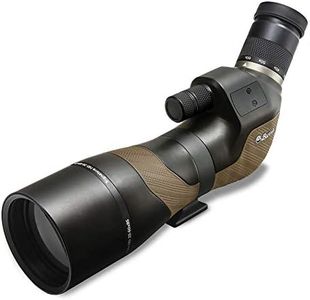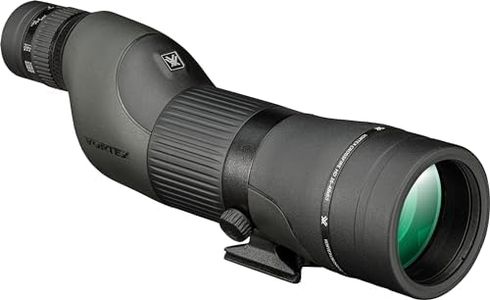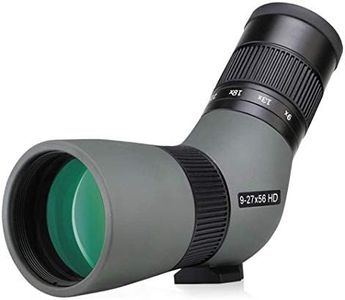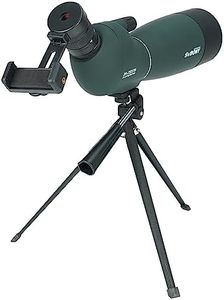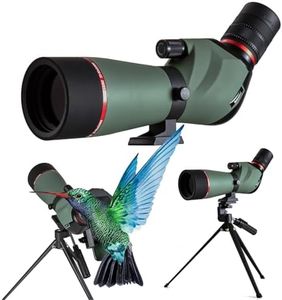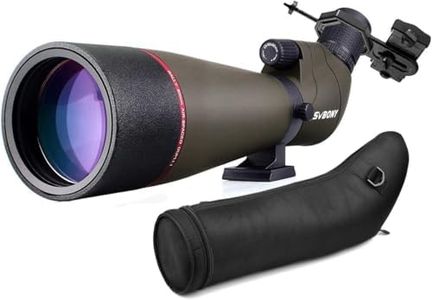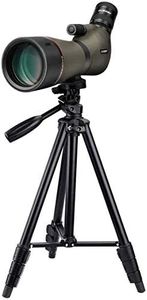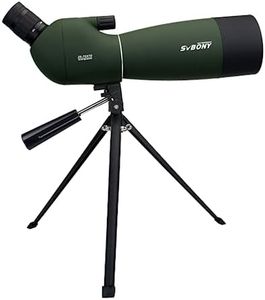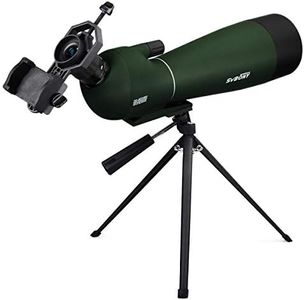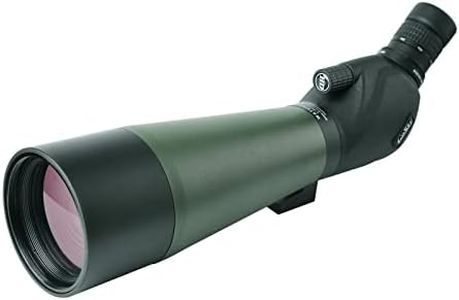We Use CookiesWe use cookies to enhance the security, performance,
functionality and for analytical and promotional activities. By continuing to browse this site you
are agreeing to our privacy policy
10 Best Hunting Scopes
From leading brands and best sellers available on the web.Buying Guide for the Best Hunting Scopes
Choosing the right hunting scope can make a big difference in your hunting experience. The ideal scope helps you see your target clearly, even from a distance or in low light, and ensures your shot is as accurate as possible. Before buying, think about the types of environments you’ll hunt in, the distances you’ll typically shoot, and how much weight and size you’re comfortable carrying. Knowing these will help you narrow down the features that best suit your needs.MagnificationMagnification refers to how much closer the target appears through the scope compared to the naked eye. It is crucial because it affects how clearly you can see and identify your target at various distances. Scopes can have fixed magnification (one set level) or variable magnification (a range you can adjust, like 3-9x). Lower magnification (1-4x) is good for close to medium ranges or fast target acquisition, while higher magnification (9x and above) works better for long-distance shooting but can make the view shakier and reduce the field of vision. Choose a magnification range that matches the typical distance you hunt; for general hunting, something in the middle is often best.
Objective Lens DiameterThe objective lens is the front lens of the scope; its size (measured in millimeters) controls how much light enters the scope. A larger lens allows more light in, making images brighter—especially helpful in low-light conditions like dawn or dusk. However, larger lenses are heavier and can make the scope bulkier. Small to mid-size lenses (around 32-40mm) are a good balance for most hunters, while larger lenses (50mm and above) are best if you often hunt in low light.
Reticle TypeThe reticle, or crosshair, is what you use to aim. It comes in many styles: simple cross, mil-dot, or illuminated types. Simple reticles are easy to use and quick for beginners, while more complex designs with extra markings can help estimate distance or bullet drop, which is useful for longer shots or advanced users. If you hunt in changing light, an illuminated reticle might help with visibility. Consider your experience and whether you’ll benefit from more advanced aiming features.
Eye ReliefEye relief is the distance you can hold your eye from the scope and still see the full image. Longer eye relief is important for comfort and safety, especially if your rifle has strong recoil. Most scopes offer around 3-4 inches of eye relief, which is usually enough, but if your gun kicks hard or you wear glasses, look for scopes with longer eye relief.
Field of ViewField of view tells you how much of the area around your target you can see through the scope, usually measured in feet at 100 yards. A wider field of view helps you spot moving game and is better for close-range or fast shooting. As magnification increases, the field of view gets smaller. If you tend to hunt in dense areas or need to track moving animals quickly, prioritize a wider field of view.
Durability and Weather ResistanceA good hunting scope should withstand the bumps, drops, and rough conditions often found outdoors. Features like waterproofing, fog-proofing, and shock resistance make a scope more reliable in varying weather and temperature. If you hunt in challenging environments, prioritize scopes with strong build quality and weatherproof features to ensure continued performance.
Adjustability and TurretsAdjustment turrets let you fine-tune your scope for windage (side-to-side) and elevation (up-and-down). Easy, precise adjustment is important for accurate shot placement, especially at different distances. Some scopes have more tactical, exposed turrets for quick changes, while others have capped turrets for simplicity and protection. Choose based on whether you need to make frequent adjustments or prefer a set-and-forget approach.
